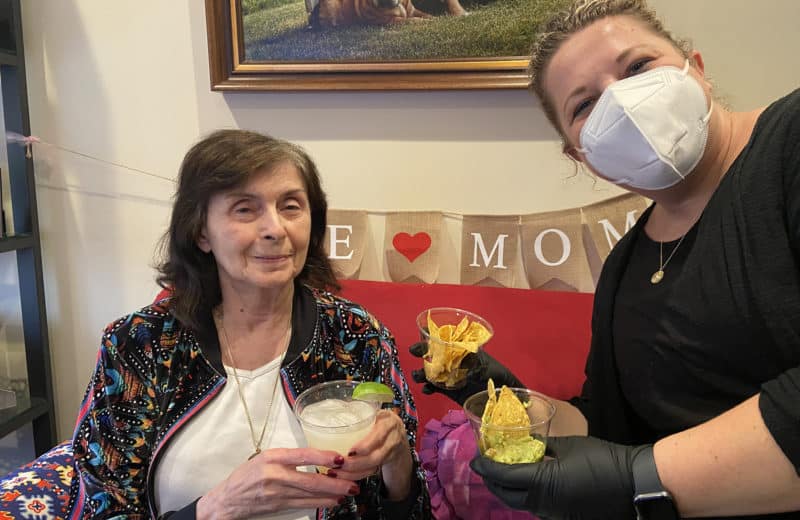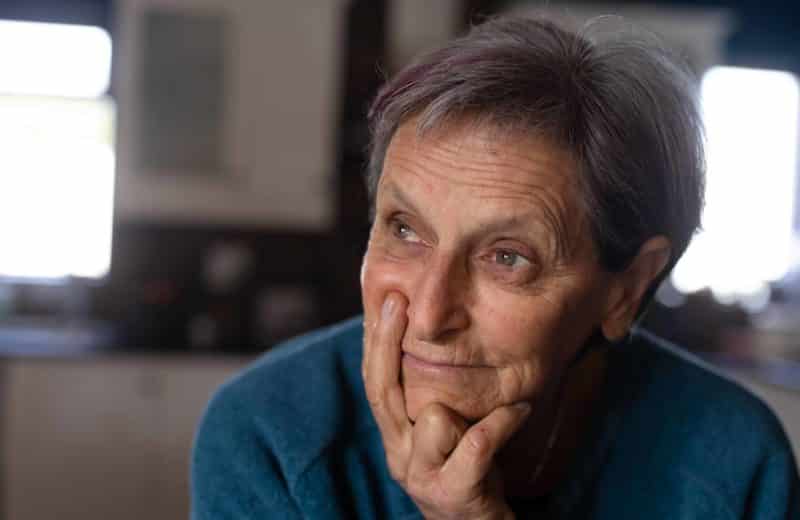Illinois groups push for medical aid in dying as an option for people with terminal illness
When we imagine the inevitable, we often think of the best: that we will pass away while cozily tucked in bed, surrounded by our loved ones, with a peaceful smile on our faces, knowing we led a life well-lived. Unfortunately, the sad reality is that the unluckiest among us may face excruciating pain in our final days.
“I know a number of people whose parents or spouses are going through terrible, terrible deterioration where there’s absolutely no help whatsoever that can be given to them,” says Judy Gaynor, an 85-year-old Chicago resident who, as a senior, spends time thinking about what’s ahead. “I strongly believe that terminally ill individuals who have no realistic chance of long-term survival should have the freedom to make their own end-of-life decisions. The financial drain it has on families is unconscionable.”
That grim truth has given Gaynor a firm opinion on end-of-life options. “I do believe that out of compassion, people should have the opportunity to decide when and how they want to end their lives,” she says.
Gaynor is one of many people and organizations who want to open up options for medical aid in dying. She’s done some fundraising for Compassion & Choices, a national group that is part of the Illinois End-of-Life Options Coalition. That joint project also includes the American Civil Liberties Union of Illinois and Final Options Illinois.
Together, the organizations share a singular goal: to make aid in dying a fundamental legal right in the state of Illinois, as it is in almost a dozen states. While there is currently no legislation under consideration in Illinois, these groups are trying to spread education and gather support for the availability of medical aid in dying.
Choosing to die peacefully
Supporters of medical aid in dying are quick to let you know that the decision isn’t suicide — not even close.
“Some people refer to this as assisted suicide and euthanasia, and that is legally and medically incorrect,” says Patricia A. González-Portillo, senior national Latino media director for Compassion & Choices.
When people with a terminal illness have six months or less to live, the Illinois End-of-Life Options Coalition wants them to have the freedom of choice.
The option would give people who are suffering the choice of how to handle their final days, says Amy Sherman, Chicago-based regional campaign and outreach manager for Compassion & Choices.
“It is not euthanasia. It’s not that they want to die; it’s that they are dying. And they don’t want to suffer needlessly during the dying process.”
“We really think ‘medical aid in dying’ is the most accurate way to describe what we’re talking about,” Sherman says. If suffering becomes unbearable, medical aid in dying gives mentally capable, terminally ill adults with a prognosis of six months or less to live the option to take a prescribed medication to die peacefully in their sleep.
“It’s wholly voluntary on the part of the terminally ill person and their healthcare provider. No one is required to do this,” Sherman says.
The type and dosage of aid-in-dying medication varies with each individual and can depend on their specific illness and the medications they are currently taking. Federal law prohibits federal health insurance programs, such as Medicare, from covering the medication.
Local legislation
As of May 2020, 74% of Americans support medical aid in dying, per a Gallup poll.
Currently, 10 states and the District of Columbia have passed legislation that addresses this issue. These include Oregon, which passed the first Death with Dignity Act in 1994, and most recently New Mexico. In 2021, the southwestern state passed the Elizabeth Whitefield End-of-Life Options Act, named after the retired district court judge who voiced her support for the legislation through a tracheostomy tube during her fight against terminal cancer.
“This legislation has moved so quickly [in jurisdictions across the country],” González-Portillo says. “When I started here seven years ago, only four states allowed medical aid in dying.”
González-Portillo believes that what helped move the issue along in public perception was, in part, the case of Brittany Maynard, a terminally ill 29-year-old California woman who moved to Oregon to die peacefully without unnecessary suffering.
Maynard’s story made world headlines, as well as the cover of People magazine in 2014. “Brittany opened up the conversation about medical aid in dying. She pretty much made it kind of okay to talk about end-of-life care options.”
Now that the conversation is brewing, and more states are passing legislation, advocates are working to spread education and support for medical aid in dying in Illinois. Their goal is for people to have a voice in how to pass their final days.
Sherman reiterates that this legislation would be for people who long to live but whose process of dying involves suffering.
“I want to clarify it is not suicide,” Sherman says. “It is not assisted suicide. It is not euthanasia. It’s not that they want to die; it’s that they are dying. And they don’t want to suffer needlessly during the dying process.”
To learn more, visit:
Compassion & Choices
Final Options Illinois
Originally published in the Fall/Winter 2021 print issue.












